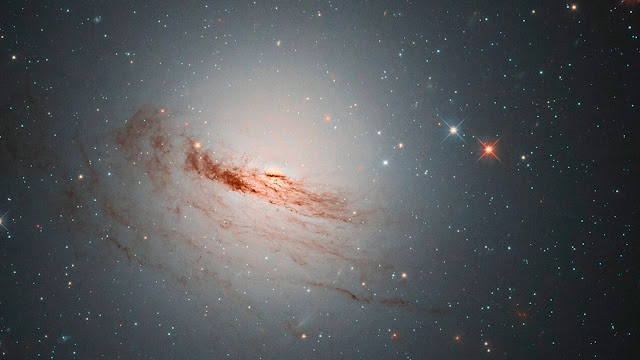Scientists believe that in space, a "fifth force" is at work. The invisible walls in space are created by this force, which they believe is mediated by a hypothetical particle called a symmetron.
The walls
are not always the same as the walls of a room. Instead, they function as
obstacles. And they could be able to explain a mysterious section of space that
has astronomers puzzled for a long time.
A new
discovery could explain why astronomers have been baffled for years by
"invisible walls in space."
An image
of the Southern Pinwheel Galaxy as captured by the DECam. Image source: NOIRLab |
The
current accepted model for explaining cosmology is the Lambda cold dark matter
(CDM) hypothesis. However, there is one intriguing issue with this concept, and
it doesn't always add up.
Small
galaxies should be dispersed in chaotic orbits around larger galaxies,
according to that idea. Most minor galaxies that orbit larger galaxies, on the
other hand, are structured in thin flat planes. These planes, or discs, are
reminiscent to Saturn's rings. It's almost as though the galaxies are arranged
along an unseen wall in space.
These
"satellites," as astronomers call them, can be found in synchronised
orbits all around our galaxy. They've also been seen in nearby galaxies,
according to astronomers. Scientists have offered numerous theories to explain
the "satellite disc problem" over the years.
However, a
new study by University of Nottingham researchers proposes a different type of
explanation for these intangible spatial barriers. The research is presently
available on the arXiv preprint server.
A new physics explanation
 |
The star
cluster NGC 1805 as imaged by the Hubble Space Telescope. Image source:
ESA/Hubble & NASA, J. Kalirai |
The
researchers believe their findings lead to a first possible "new
physics" explanation that does not entirely eliminate dark matter. Dark
matter, which accounts for the majority of the mass in the universe, has proven
to be one of the cosmos's greatest mysteries. As a result, it has played a significant
role in these types of studies.
Unlike
previous research, this new study shows that hypothetical particles called
symmetrons could create intangible space boundaries. These "domain
walls," as astronomers call them, are what keep galaxies in their precise
orbits. Instead of orbiting in a jumbled way, as the CDM model predicts, the
galaxies orbit in a neat pattern.
According
to the experts, there is a 50/50 possibility that various locations will use
different symmetrons values. This could explain the disparities between the
smaller galaxies that orbit some larger galaxies.
This is,
of course, only a proof of concept. We'll need to prove symmetrons exist if
we're going to prove there are invisible walls in space. This is where space
telescopes like the James Webb come into play. They may be able to educate us
more about these new particles and the organisation they bring to the universe
as they observe areas of the early universe.
Reference; Arxiv Preprint






0 Comments